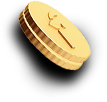What is a Bear Market vs Recession, and how can you prepare?

We live in a period of opportunity. Even in the face of a bear market or recession, we still have the opportunity to improve our lives financially.
The coronavirus pandemic may have threatened your employment, monetary freedom, or retirement goals. Still, it is an opportunity to bolster our understanding of how our finances work, and build towards a better future.
Bear markets and recessions are part of the natural economic life cycle and any economic trouble is temporary. With that being said, it is an excellent time to prepare in case an extended economic downturn is looming.
What Is a Bear Market vs Recession?
A bear market is defined as a time when securities prices slide by 20% or more over multiple months.
A recession is a period of declining economic performance (as reflected by the GDP, otherwise known as all the goods and services produced by the economy) over two consecutive quarters.
A bear market or recession can be caused by some combination of business or production failing, or like in 2020, a natural disaster.
How to Prepare
We’ve put together 5 practical ways to help you take unsettling and challenging economic conditions head-on.
1. Amass an Emergency Fund
Saving money in these times is no easy task. During times of recession or a bear market, the general advice is normally to focus first on loading up your emergency fund with one months worth of living expenses. After that, pay off your debt, and then focus on building up a reserve of three-to-six months worth of funds. Doubling down on developing and committing to a budget can help you stretch each dollar further.
Having an emergency fund is always a good idea, not just when there’s talk of a recession. In unexpected situations that might make it hard to pay day-to-day expenses, we can dip into our emergency fund instead of reaching for our credit cards to cover our necessities.
2. Pay Off High-Interest Debts First
There are multiple philosophies on the best ways to pay off debt. We recommend you begin by paying off high interest loans first. If you don’t tackle this debt first, the high interest rates will increase your overall debt, making it harder for you to pay off in the future.
Beyond this approach, we recommend you pay off loans with smaller amounts first, which will help you decrease your total number of debts. Racking up these small victories helps you build momentum over time.
3. Limit Your Spending
In developing your budget, it’s also important to cut down on your spending. Many experts recommend a 50/30/20 plan. This means 50% of your income goes to your essential needs, 30% to your wants, and 20% to investing and paying off debt.
4. Make Smart Investments
If you’re looking to make your money grow, you can still invest in a bear market or recession and increase your capital. The best way to tackle this situation is by keeping your current investments intact. The value of some stocks may be down, but remember, this is a temporary situation, so your best bet is to not touch them for the time being.
On the other hand, it’s also a good time to put money into the stock market. Some valuable investments may be available at dirt-cheap prices, and they have great potential of increasing in value once the market experiences an upswing once again.
5. Keep Your Wits About You
No one really knows how the financial climate will affect us all, how long it will last, or what the market will look like once it’s over. However, you have the ability to navigate these troubled waters by keeping your head on your shoulders. Investing is connected to your livelihood and financial freedom, so don’t act on fear when making money moves. Remember, all periods of market volatility will most likely pass, and you are in a great position to thrive from here on out!








